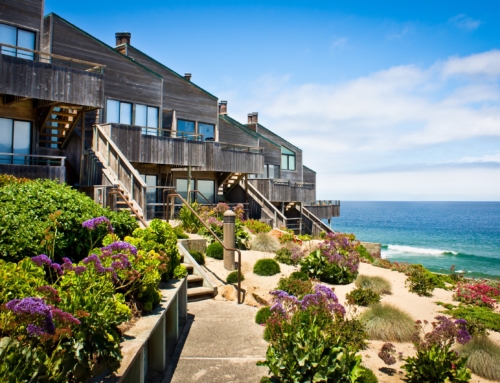Here’s how you know you’re in the middle of a real estate boom: In tiny, picturesque Sayulita, Mexico, about 45 minutes north of Puerto Vallarta, the first signs you see when you turn onto the dirt road leading into town are for Century 21 and Prudential Realty.
On the main road to the beach, every other storefront boasts photos of land, houses, and condos for sale. In fact, there are more real estate shops in town than places to buy tchotchkes and mementos.
The only problem is, in Sayulita, as in Bucerias and Puerto Vallarta, you don’t hear a lot of Spanish. By and large, all you hear is English.
I spent my spring vacation renting a beautiful two-bedroom, two-bath condominium about 25 minutes north of Puerto Vallarta on the bay. It belongs to a Canadian attorney and his wife, who fly in several times a year to enjoy the weather. The rest of the year, it’s available for rent. Our friends rented the condo next door, a three-bedroom, three-bath unit owned by three couples from Las Vegas.
The weather was spectacular, just what you’d expect Spring in Mexico to be like: sunny, mid-80s every day, with a cool breeze rolling in off of the bay. The development itself had lush landscaping, a contemporary design with nice design touches, and beautiful, infinity-edge pools.
But if you’re looking to mingle with locals, think again. Priced at $250 to $500 per square foot, a good portion of the condos in our development were owned by Americans and Canadians.
One married couple we met was from Utah. Or rather, she and her 11 siblings were born in Guadalajara, Mexico. But somehow she wound up living in a suburb of Salt Lake City, where she met her husband. Nearly two years ago, they bought a condo in this development and are now considering buying another in a brand new community the developer is working on — despite the fact that he complained nearly non-stop about what was wrong with the developer, the quality of the construction, and staff that manage the complex.
Clearly, Americans are spending money in Mexico — big money. In our development, condos and townhomes are selling for $300,000 to more than $1 million. Resales, according to the couple we met, have produced little profit for owners who bought in early.
But it’s cheap to rent the good life. We paid $175 per night for our 1,600-square foot unit, while our friends paid around $225 per night for their 1,800-square foot condo. That doesn’t go far when you’ve got a $400,000 mortgage to pay. The online calendar at VRBO.com shows plenty of vacancies at our development.
As far as I could tell, the developers had tried to set up this Mexican second home development like an American condominium association. But from my many visits to Mexico and my husband’s recollection of his childhood spent growing up in Mexico City, it was easy to see that we were south of the border.
For Americans thinking of buying a primary or second residence in Mexico, here are some things to keep in mind before you sign the papers:
-Water is a big deal in Mexico, and there isn’t much of it.
I’ve rarely been to a part of Mexico where having enough water isn’t a problem. When we asked about water problems in the area, which is located about 20 minutes north of Puerto Vallarta, we were told that Bucerias, the closest town, had an excellent water supply.
One of the owners we met,, who has spent most of the last two years at the development, told us that she usually loses water just after she has lathered up her hair. “It happens,” she said.
For our trip, the water purification system in the condo burnt out, so we bought 5 gallon jugs of purified water and used it for everything, from cooking to brushing our teeth.
-The electricity doesn’t always work.
One night, the lights went out in the entire complex. They were out for about a half hour, which made it difficult to do things like cook. Worse, the power outage knocked out the wireless Internet access. No one was there to reset the system, which was out more than 20 hours by the time we checked out and headed for the airport.
-Security may be a real issue.
In Mexico, there are different levels of security. Our development had a gate manned by a 24-hour security staff. But the waterfront was wide open as were the sides of the development, which allowed for open access. Anyone could walk up the beach or in from the highway and walk into our development.
Contrast that with the entrance to the Four Seasons, in Punta de Mita, another 20 minutes up the coast. The gate was a huge 15-foot door that was locked. Unless you had a confirmed dinner reservation (with your name on a list) or you were booked as a guest of the hotel, you could not get in. The entire community is bounded by a tall barbed wire fence . It would be difficult to get past the security of this community.
Finally, near the entrance to our community, Mexican Police had set up a permanent 24-hour checkpoint. Although we were pulled over, it was unclear what they were looking for.
-In Mexican developer lingo, “manana” might mean never.
If something needs to be fixed in your unit or in the common areas, be prepared to wait. Several owners told us it takes awhile to get basic things done.
Still, if you have to wait, it’s a lot nicer to wait while basking in the 80-degree sunshine in front of a gorgeous pool with a view.


Leave A Comment